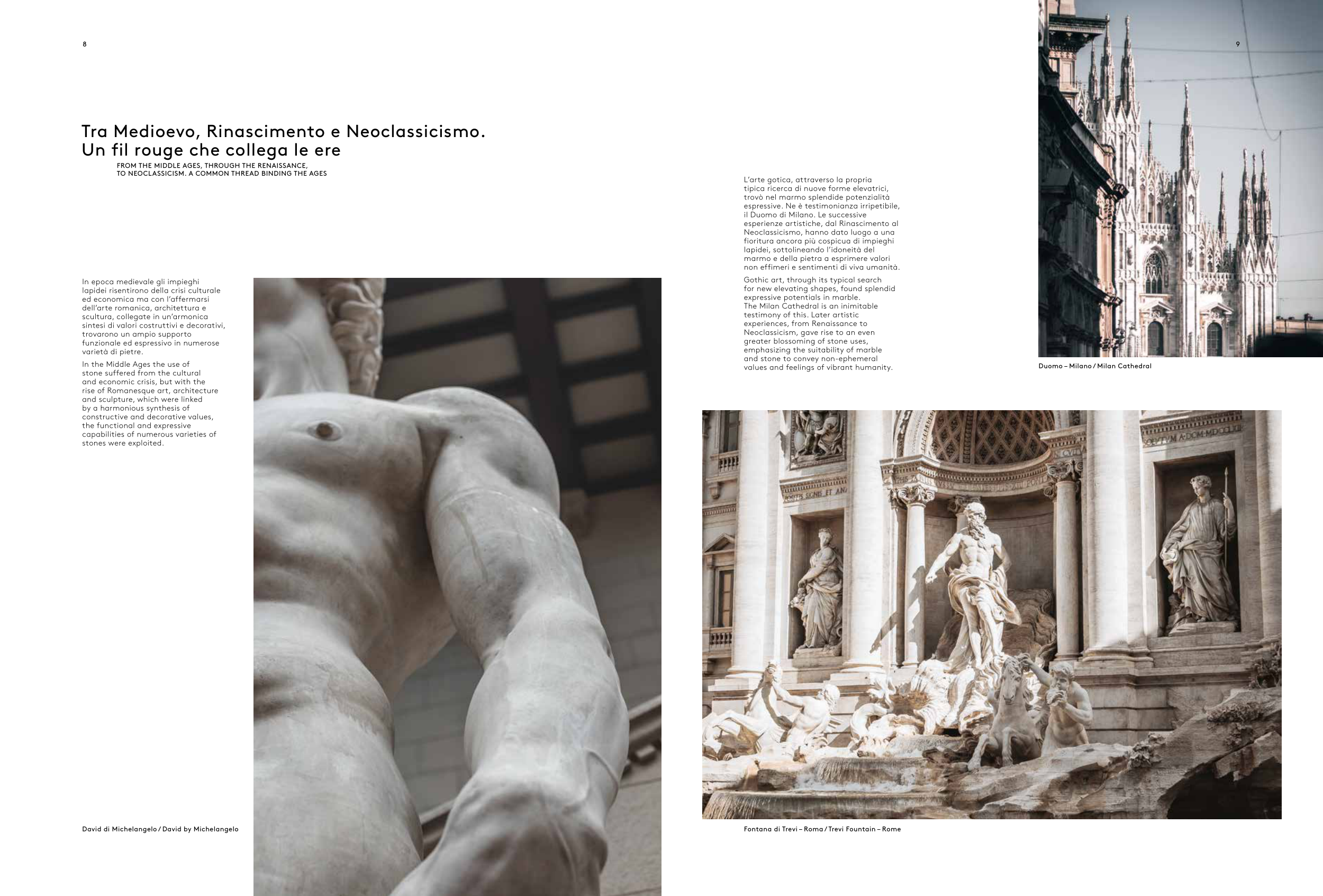David di Michelangelo / David by Michelangelo
Duomo – Milano / Milan Cathedral
Fontana di Trevi – Roma / Trevi Fountain – Rome
L’arte gotica, attraverso la propria
tipica ricerca di nuove forme elevatrici,
trovò nel marmo splendide potenzialità
espressive. Ne è testimonianza irripetibile,
il Duomo di Milano. Le successive
esperienze artistiche, dal Rinascimento al
Neoclassicismo, hanno dato luogo a una
fioritura ancora più cospicua di impieghi
lapidei, sottolineando l’idoneità del
marmo e della pietra a esprimere valori
non effimeri e sentimenti di viva umanità.
Gothic art, through its typical search
for new elevating shapes, found splendid
expressive potentials in marble.
The Milan Cathedral is an inimitable
testimony of this. Later artistic
experiences, from Renaissance to
Neoclassicism, gave rise to an even
greater blossoming of stone uses,
emphasizing the suitability of marble
and stone to convey non-ephemeral
values and feelings of vibrant humanity.
Tra Medioevo, Rinascimento e Neoclassicismo.
Un fil rouge che collega le ere
FROM THE MIDDLE AGES, THROUGH THE RENAISSANCE,
TO NEOCLASSICISM. A COMMON THREAD BINDING THE AGES
In epoca medievale gli impieghi
lapidei risentirono della crisi culturale
ed economica ma con l’affermarsi
dell’arte romanica, architettura e
scultura, collegate in un’armonica
sintesi di valori costruttivi e decorativi,
trovarono un ampio supporto
funzionale ed espressivo in numerose
varietà di pietre.
In the Middle Ages the use of
stone suffered from the cultural
and economic crisis, but with the
rise of Romanesque art, architecture
and sculpture, which were linked
by a harmonious synthesis of
constructive and decorative values,
the functional and expressive
capabilities of numerous varieties of
stones were exploited.
8
9


